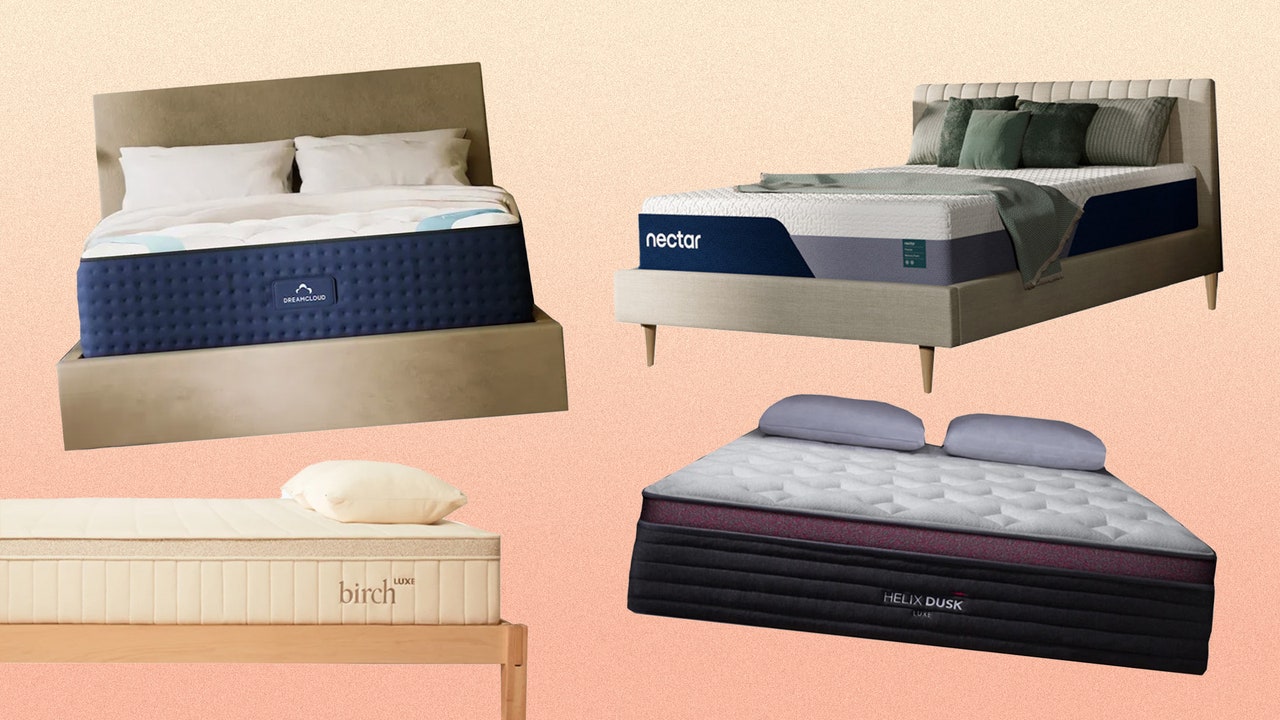Hybrid mattresses are, in our opinion, a good middle ground. While they’re bouncier than memory foam, they have foam layers that dampen some movement so they don’t transfer motion as much as traditional innerspring mattresses. They also offer more support than all-foam beds, since they have a coil layer (or layers) that reinforce the whole bed and reduce sinking and sagging. Hybrids also tend to sleep cooler, since the coils promote airflow and they don’t trap as much heat as foam.
The bottom line? If you sleep cool and like a body-contouring, sinking-in feeling, an all-foam bed is better for you. If you need more support and want more airflow, go with a hybrid.
What You Should Look for in a Mattress for Couples
While the type of bed is important, there are some specific features you’ll want to look for when choosing a mattress for couples. To narrow down the options, consider motion isolation, noise, cooling, size, firmness, and edge support. You’ll also want to factor in your sleeping position and how that determines which mattress you should choose.
Motion Isolation
Motion isolation, or the mattress’ ability to stop movement from going from one side of the bed to the other, is one of the most important factors to consider. If your bed is too bouncy, any movement can jostle your partner (or you) awake. Foam beds tend to excel at motion isolation, but hybrids with several foam layers also do a great job at this. All of the beds we recommend got good scores in motion isolation during our testing, but you can refer to each review for more detailed notes on how the mattresses stacked up.
Quiet
A noisy bed can also disrupt your sleep, especially if you toss and turn at night. Fortunately, most modern mattresses (even innerspring types) have upgraded technology and comfort foams that dampen noise so it’s not too intrusive. That said, if you’re a light sleeper or extra sensitive to noise, all-foam beds are the quietest, followed by hybrids and then innerspring.
Cooling
Things can get pretty toasty when sharing a bed with someone else, especially if one or both of you are hot sleepers. If you tend to overheat at night, look for a bed with cooling features, like gel foams, cool-to-the-touch covers, and/or coil layers that promote airflow. In general, all-foam beds tend to be the warmest since they can trap heat (although technology has come a long way over the years). Hybrids and innerspring beds sleep cooler.
Size
Your mattress needs to be big enough that you don’t accidentally bump into your partner when changing positions or tossing and turning at night. There’s no one-size-fits-all solution here. Instead, the right size depends on the size of each person and how much space you need. That said, a queen or a king size mattress is probably a good bet.
Firmness
Firmness is largely a personal preference, but there are some additional things to consider when sleeping with someone else. If your bed is too soft, it can sink in the middle, causing both of you to roll toward the center into each other’s personal space. You want to find a good compromise—a bed with a firmness level that works for your preferences and needs, but isn’t too soft. When in doubt, medium to medium-firm tends to work well for most people, and this firmness level is a good compromise for couples with different sleeping positions. If you’re back or stomach sleepers, you’ll likely do better with a firm mattress. The best mattresses for side sleepers are a little softer.
Edge Support
Edge support describes how sturdy a mattress feels around the perimeter when you sit or lie on the edge. If a mattress lacks edge support, it can feel like you’re rolling or sliding off the bed when you spread out. On the flip side, a mattress with good edge support holds you up so you can take advantage of most of the bed’s surface area. When sleeping with a partner, you want a bed that has at least decent edge support, especially if you want to spread out. Hybrids tend to have better edge support than foam mattresses because the coils do a better job of holding the bed up. That said, dense foam bases can provide decent edge support too.
Sleeping Position
Your sleeping position affects how a mattress feels to you. Side sleepers generally need a medium to medium-soft mattress, since these have enough give to alleviate pressure in deep compression areas like the hips and shoulders. Back sleepers usually do better with a medium-firm to firm bed, which keeps the spine aligned and reduces sagging. Stomach sleepers need a medium-firm to extra-firm bed to prevent low back arching when they sleep. If you and your partner sleep in different positions, it’s best to compromise somewhere in the middle. Most people find medium to medium-firm beds comfortable, especially if they have extra pressure-relieving features.
Tips for Couples Sharing a Bed
Choosing the right mattress can help you get a better night’s sleep, but it’s not the only thing you can do. Our sleep experts shared the following tips for snoozing more soundly with a partner.

